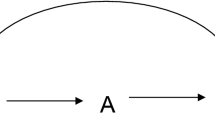Abstract
In this paper, under a proportional model, two families of robust estimates for the proportionality constants, the common principal axes and their size are discussed. The first approach is obtained by plugging robust scatter matrices on the maximum likelihood equations for normal data. A projection- pursuit and a modified projection-pursuit approach, adapted to the proportional setting, are also considered. For all families of estimates, partial influence functions are obtained and asymptotic variances are derived from them. The performance of the estimates is compared through a Monte Carlo study.
Similar content being viewed by others
References
Boente G, Orellana L (2001) A robust approach to common principal components. In: Fernholz LT, Morgenthaler S, Stahel W (eds) Statistics in genetics and in the environmental sciences. Birkhäuser Verlag AG , Basel, pp 117–145
Boente G, Orellana L (2004) Robust plug-in estimators in proportional scatter models. J Stat Plann Inference 122: 95–110
Boente G, Pires A, Rodrigues I (2002) Influence functions and outlier detection under the common principal components model. Biometrika 89:861–875
Boente G, Critchley F, Orellana L (2004) Influence functions for robust estimators under proportional scatter matrices. http://www.ic.fcen.uba.ar/preprints/boecriore.pdf
Boente G, Pires A, Rodrigues I (2006) General projection-pursuit estimators for the common principal components model: influence functions and Monte Carlo study. J Multivariate Anal 97:124–147
Croux C, Haesbroeck G (2000) Principal component analysis based on robust estimators of the covariance or correlation matrix: influence functions and efficiencies. Biometrika 87:603–618
Croux C, Ruiz–Gazen A (1996) A fast algorithm for robust principal components based on projection pursuit. In: Prat A (ed) Compstat: proceedings in computational statistics. Physica-Verlag, Heidelberg, pp 211–217
Croux C, Ruiz–Gazen A (2005) High breakdown estimators for principal components: the projection-pursuit approach revisited. J multivariate Anal 95:206–226 ((pdf))
Donoho DL (1982) Breakdown properties of multivariate location estimators. PhD qualifying paper, Harvard University
Eriksen PS (1987) Proportionality of covariance matrices. Ann Statist 15:732–748
Flury B (1984) Common principal components in groups. J Am Stat Assoc. 79:892–898
Flury B (1986) Proportionality of k covariance matrices. Stat Probab Lett 4:29–33
Flury B (1988) Common principal components and related multivariate models. Wiley, New York
Flury B, Schmid M (1992) Quadratic discriminant functions with constraints on the covariance matrices: some asymptotic results. J Multivariate Anal 40:244–261
Flury B, Schmid M, Narayanan A (1994) Error rates in quadratic discrimination with constraints on the covariance matrices. J Classification 11:101–120
Guttman I, Kim DY, Olkin I (1985) Statistical inference for constants of proportionality. In: Krishnaiah PR (ed) Multivariate analysis–VI. North-Holland, New York, pp 257–280
Khatri CG (1967) Some distribution problems connected with the characteristic roots of \({{\bf S}_1 {\bf S}_2^{-1}}\) . Ann Math Stat 38:944–948
Kim DY (1971) Statistical inference for constants of proportionality between covariance matrices. Technical Report 59, Standford University, Department of Statistics, Stanford
Manly BF, Rayner JCW (1987) The comparison of sample covariance matrices using likelihood ratio tests. Biometrika 74:841–847
Maronna RA (1976) Robust M-estimators of multivariate location and scatter. Ann Stat 4:51–67
Novi Inverardi PL, Flury B (1992) Robust estimation of common principal components. Quaderni di Statistica e Matematica Applicata alle Scienze Economico–Social 14:49–79
Owen A (1984) A neighborhood-based classifier for landsat data. Canad J of Statist 12:191–200
Pillai KCS, Al–Ani S, Jouris GM (1969) On the distribution of the ratios of the roots of a covariance matrix and Wilks’ criterion for tests of three hypotheses. Ann Math Stat 40:2033–2040
Pires AM, Branco J (2002) Partial influence functions. J Multivariate Anal 83:451–468
Rao CR (1983) Likelihood tests for relationships between covariance matrices. In: Karlim S, Ameniya T, Goodman LA (eds) Studies in econometrics, time series and multivariate statistics. Academic, New York, pp 529–543
Stahel W (1981) Robust estimation: infinitesimal optimality and covariance matrix estimation. (in German) Thesis, ETH, Zurich
Author information
Authors and Affiliations
Corresponding author
Rights and permissions
About this article
Cite this article
Boente, G., Critchley, F. & Orellana, L. Influence functions of two families of robust estimators under proportional scatter matrices. Stat. Meth. & Appl. 15, 295–327 (2007). https://doi.org/10.1007/s10260-006-0029-1
Accepted:
Published:
Issue Date:
DOI: https://doi.org/10.1007/s10260-006-0029-1




